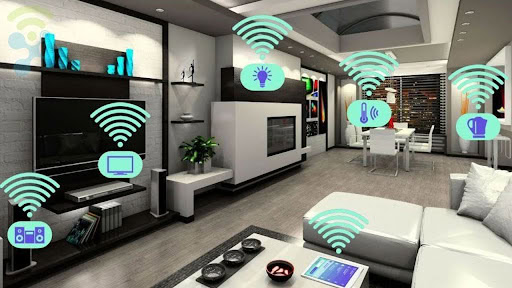Can you fly a drone at night? Drones have been growing in popularity nowadays, and their market will only grow from here on out. People use them to get amazing landscape shots, for videography, and even to help with their businesses. There’s no place a person can’t get a view of with the help of their drone.

If you’re one of the many new users out there, you may not have known that it wasn’t allowed to fly a drone at night before. Nowadays, it’s perfectly legal for you to fly a drone at night, but there are some regulations to consider.
Read what we’ve prepared below to know these drone regulations. This way, you can avoid getting into legal trouble.
Part 107 Regulations for Drone Flight
You may have heard of Part 107 thrown around a lot once you have a drone of your own. This is the Federal Aviation Administration’s (FAA) rule that enables the flight of commercial drones at night. Before, anyone looking to fly a drone needed to apply to get permission from the FAA.
It was a long and expensive process that, when ignored, meant you’d be flying your drone illegally. Thanks to Part 107, though, the barrier to operating drones lowered. Businesses can now use a commercial drone without going through any lengthy process.
They can even operate at night, provided they’ve equipped their drones well. What if you’re not running a business, though? Can you still fly a drone at night?
Yes, you can. Part 107 allows recreational flights at night. Recreational pilots have a different set of rules to follow, though, which we’ll discuss further below. For now, you only need to worry about the drone itself.
Does Your Drone Fall Under Part 107?
As mentioned above, commercial and recreational flights follow different regulations. When flying a commercial drone, it must weigh under 55lbs for Part 107 to apply. This means you cannot risk your commercial drone carrying anything that can make it go over the weight limit.
It’s also essential to have a remote certification from the FAA. Operating a commercial drone without the proper certification can cause severe penalties. What’s great is that becoming a certified drone pilot is quite easy.
First, get an FAA tracking number and create an account on FAA’s website. You’ll need to pass an Airmen Knowledge Test, which will cost 150 USD per attempt. The results will appear in a few days, and you can link them to your IACRA application.
All that’s left is to pass a TSA background check and you’ll get your certificate soon if you pass. Have this on hand whenever you’re operating a drone to fall under Part 107 regulations.
Recreational drones are exempt from the 55lbs weight limit. Flying heavier UAS means you must apply for a special exemption, though.
You may also like Virtual Reality Headset Compatible with iPhone & Android
Areas You’re Not Allowed to Fly Over
Even with Part 107 helping you out with night-time flights, you still shouldn’t fly over certain areas. These restrictions are in place to protect government interests or the people within.
Sports stadiums and any area holding sporting events are among the latter. An area packed with people means you’re likely to hit someone should your drone fail.
It’s also a given that you can’t enter the airspace of any restricted area. This applies to private properties to protect the privacy of the property owners. Military zones, construction sites, and national landmarks are also off-limits.
You’re also not allowed to operate a drone during emergencies. Hurricanes have winds strong enough to knock drones all over the area. Other disasters such as wildfires also need the airspace clear for rescue operations.
Remember that these restrictions are in place to help you, too. You’re liable for any property damage or injury that occurs because of your drone.
Other Considerations
Whether you’re flying commercially, or for recreational purposes, there are a few things to consider. First, always have sight of your drone while it’s in the air. To aid in this, install good anti-collision lighting to make it visible for up to three miles.
Doing this also helps against mid-air collisions. Speaking of, should you ever encounter a manned aircraft while operating your drone, give them the right of way. Any damage to your drone or the aircraft will be your responsibility.
You should also ask for permission before operating a drone in controlled airspace. You’ll need an approved waiver of authorization when operating a drone at night there.
When flying your drone, remember to keep your altitude 400 feet from the ground. If you’re operating it from within a structure, though, the drone must not go higher than 400 feet above the structure’s highest point. This keeps it out of the way of any crewed aircraft passing over the area.
Finally, only fly one drone at a time. Even as a hobby, there’s no reason for you to fly two drones at once. It will only be a danger to you or the other people in the area.
Tips for Flying Drones at Night
Before you embark on your nighttime flight, survey the area in the morning. Familiarize yourself with anything that may compromise your drone’s flight. Obstacles and high-altitude wires are among these things.
What’s great is that some modern-day drones have built-in sensors for avoiding obstacles. Those like the DJI Mini 2 have features to keep themselves safe in the event of human error.
Even then, you shouldn’t rely on the drone’s features to keep nighttime flights safe. Get a partner so you have an extra pair of eyes trained on the drone.
You may also like dser Portable Mini Projectors for iPhone
Can You Fly a Drone at Night? Know the Answer Today
Nothing can beat the shots you get from drones. Can you fly a drone at night, though? Knowing the rules for drones can save you from legal issues, so read what’s above and enjoy flying your drone today!
Do you want to learn more about the different drone laws and regulations? Our other guides can fill you in on what you need to know. Check them out and learn a thing or two now!











